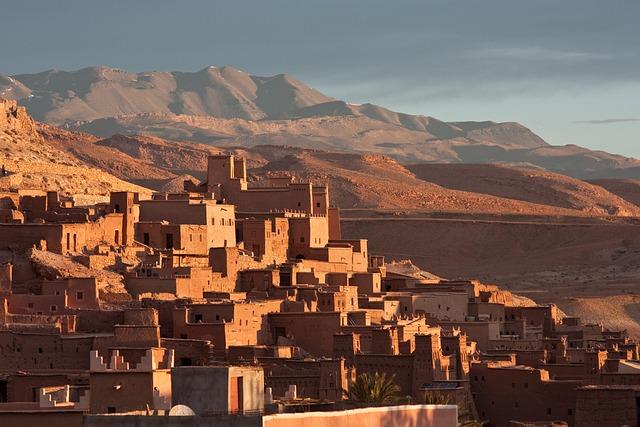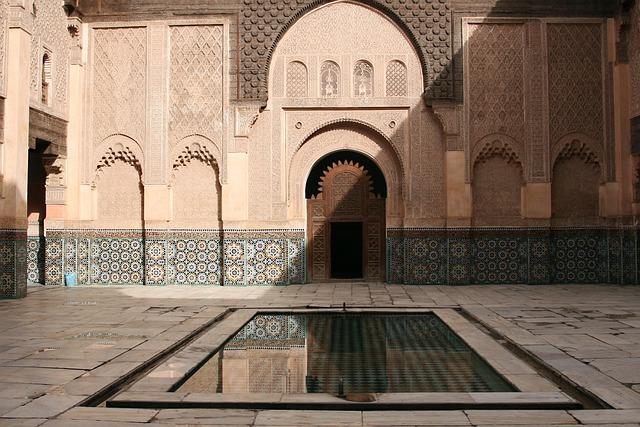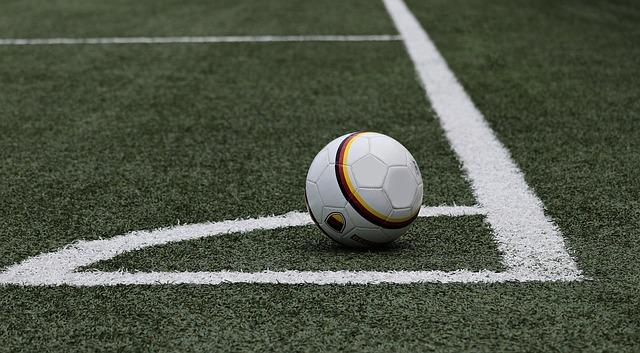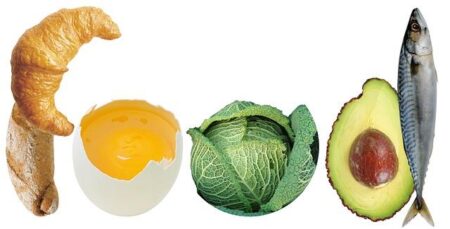What’s Fueling the success of Women’s Football in Morocco?
In recent years, women’s football in Morocco has experienced a remarkable surge in popularity and success, transforming the landscape of the sport in a country traditionally associated with male dominance in athletics. With increased visibility, burgeoning talent, and supportive initiatives, Moroccan women’s football is not just gaining momentum; it is breaking barriers and reshaping societal norms. From grassroots programs to international competitions, the rise of female athletes is igniting a new passion for the game and inspiring a generation. This article delves into the key factors driving this transformation, examining the efforts of organizations, the dedication of players, and the role of cultural shifts in propelling Moroccan women’s football to new heights. Join us as we explore the vibrant journey of a sport that is empowering women and challenging stereotypes, poised to leave a lasting impact on both Moroccan society and the global football stage.
Factors Driving Growth in Women’s Football in Morocco
The growth of women’s football in morocco is underpinned by several key factors that are reshaping the landscape of the sport. Increased investment from both local and international organizations has played a crucial role in developing the infrastructure and support systems necessary for aspiring female athletes. This includes funding for training facilities, coaching programs, and grassroots initiatives aimed at encouraging young girls to participate in football. The Moroccan Football Federation has also been proactive in promoting women’s leagues and tournaments, contributing to a more competitive environment that attracts talent and enhances visibility.
Moreover, the shifting cultural perceptions surrounding women in sports have been significant. There is a growing recognition of the importance of gender equality in various sectors, including athletics. As an inevitable result, positive role models, such as national team players excelling on both domestic and international stages, have emerged to inspire the next generation. Additionally, community engagement initiatives have helped normalize and celebrate women’s involvement in football, leading to increased fan support and media coverage. Together,thes elements create a conducive environment for women’s football to thrive in Morocco,heralding a new era of growth and success.

Investment in Grassroots Programs and facilities
The resurgence of women’s football in Morocco is remarkable, primarily due to the strategic . By focusing on the foundational levels of the sport, local organizations and the goverment have been able to identify and nurture talent from a young age. Community programs have been instrumental in providing access for young girls to participate in football, breaking traditional barriers and promoting inclusivity. Initiatives include:
- Establishment of youth leagues
- Training camps for aspiring players
- partnerships with schools to facilitate regular practice
- scholarship programs for promising athletes
Moreover, the advancement of infrastructure plays a critical role in sustaining this growth. Modern training facilities are being built to meet the needs of female athletes, ensuring they have the same opportunities as their male counterparts.Clubs across the nation are investing in creating safe, accessible spaces where girls can train and compete. This includes:
| Facility Type | Key Features |
|---|---|
| Training Grounds | Quality pitches, fitness centers |
| Stadiums | Seating capacity, lights for night games |
| Support Centers | Coaching staff, mental health support |
These investments not only enhance the training environment but also inspire the next generation of female footballers by showcasing the sport as a viable career path. as visibility increases and support grows, the future looks shining for women’s football in Morocco.

The Role of Media Coverage in Elevating Visibility
The transformation of women’s football in Morocco can be largely attributed to enhanced media coverage, which has played a pivotal role in bringing the sport to a wider audience. As matches are broadcasted and reported on more frequently, fans are exposed to the talent and dedication of the players, shifting perceptions and sparking renewed interest. Media platforms, including television, online news outlets, and social media, serve as crucial channels for showcasing the dynamic nature of women’s football. This visibility has not only attracted spectators but has also encouraged investment from sponsors and stakeholders eager to be associated with a rapidly growing sport.
Moreover, increased media attention creates a cycle of success, where exposure generates interest and, ultimately, support. Fans can now easily access match schedules, highlight reels, and player interviews, fostering a deeper connection with the sport. The impact is reflected in various ways:
- More sponsorship deals that enhance financial stability for teams.
- Enhanced coverage of grassroots initiatives encouraging youth participation.
- Increased attendance at games,boosting morale among players.
To illustrate the growing landscape of women’s football in Morocco,the following table highlights key metrics regarding media engagement and participation:
| Year | Number of Matches Broadcasted | Average Viewership | Increased Sponsorship |
|---|---|---|---|
| 2020 | 10 | 50,000 | $100,000 |
| 2021 | 25 | 150,000 | $250,000 |
| 2022 | 50 | 300,000 | $500,000 |

building Strong Community Support and Engagement
The rise of women’s football in Morocco is not solely attributed to the players on the field; it thrives on the robust community support and engagement that has emerged around the sport.Local clubs have become more than just teams; they have transformed into hubs of community interaction and pride. Fans from diverse backgrounds unite to cheer on their teams, creating an electric atmosphere that is vital for fostering local passion. This communal bond is strengthened through initiatives such as:
- Grassroots Coaching Clinics: Training sessions for young female athletes led by local stars.
- Community Events: Matches organized as family-pleasant festivals, emphasizing inclusivity.
- Volunteer Programs: Opportunities for locals to assist in organizing matches and events.
Support also extends beyond the pitch, as local businesses rally to sponsor teams and events, recognizing the potential for economic growth linked to women’s football. schools now incorporate football training into their physical education programs, emphasizing the sport as a pathway to empowerment. To visualize this growing support, consider the following table showcasing key community engagement metrics:
| Community Engagement Metric | 2021 | 2022 | 2023 |
|---|---|---|---|
| Number of Local Sponsors | 10 | 25 | 40 |
| Attendance at Women’s Matches | 1,000 | 3,000 | 5,500 |
| Youth Participation in Clinics | 100 | 250 | 450 |

Success Stories and Role Models Inspiring Future Generations
The remarkable ascent of women’s football in Morocco has captured global attention, showcasing the extraordinary potential and resolve of female athletes. Driven by a combination of grassroots initiatives and national support, these pioneering figures have become beacons of inspiration for young girls aspiring to break barriers. Through various training programs and community outreach, they are not only honing their skills but also redefining societal norms surrounding women in sports. The journeys of these athletes are a testament to how determination,coupled with tailored support,can transform dreams into reality.
Among the most influential role models emerging from this movement is Jasmine Benkhaled, a rising star whose tenacity on the field embodies the spirit of the new generation.Additionally, the establishment of local leagues and support from organizations has significantly bolstered visibility and opportunities for talented players across the country. These collective efforts are evident in the recent initiatives aiming to promote women’s football at educational institutions, as represented in the table below, which outlines key programs:
| Program Name | Age Group | Focus Areas |
|---|---|---|
| Grassroots Development | 8-12 years | Fundamentals, Teamwork |
| talent Identification | 13-18 years | Skills Assessment, Competitive Play |
| Coaching Workshops | All ages | Coaching Techniques, Leadership |

Strategic Collaborations for Continued development and Success
The rise of women’s football in morocco can be attributed to a series of strategic collaborations that have paved the way for development and success. Key partnerships between local football clubs, governmental bodies, and international organizations have created a robust framework, enabling the national team to thrive. By focusing on initiatives such as:
- Investment in grassroots programs: Encouraging young girls to participate in sports from an early age.
- Training and development workshops: Facilitating coaching clinics led by experienced trainers to elevate skills.
- Access to facilities and resources: Improving infrastructure to provide adequate training venues for aspiring players.
Furthermore, partnerships with global football associations have opened doors for Moroccan women players to gain exposure and experience through international competitions. The synergy between local clubs and worldwide governing bodies has led to the establishment of exchange programs, allowing players to learn best practices and bring valuable insights back to their home country. Recent collaborations have also emphasized:
- Visibility through media partnerships: enhancing coverage of women’s matches to attract fans and sponsors.
- Educational initiatives: Empowering female athletes not just in sports but also in life skills.
- Supportive mentorship: Connecting young talents with established players for guidance and inspiration.

Concluding Remarks
As women’s football in Morocco continues to gain traction, it is indeed evident that a confluence of factors is driving this success. From increased investment in grassroots programs to the establishment of professional leagues and the support of governmental bodies, the landscape for female athletes in the country is transforming. The surge in visibility and support has not only empowered young girls to pursue their dreams but has also fostered a sense of national pride that permeates the sport. With Morocco set to host significant international competitions, the momentum is expected to grow, providing further opportunities for female players to shine on the world stage. As key stakeholders remain committed to development and inclusivity, the future looks promising for women’s football in Morocco, poised to inspire generations to come.







